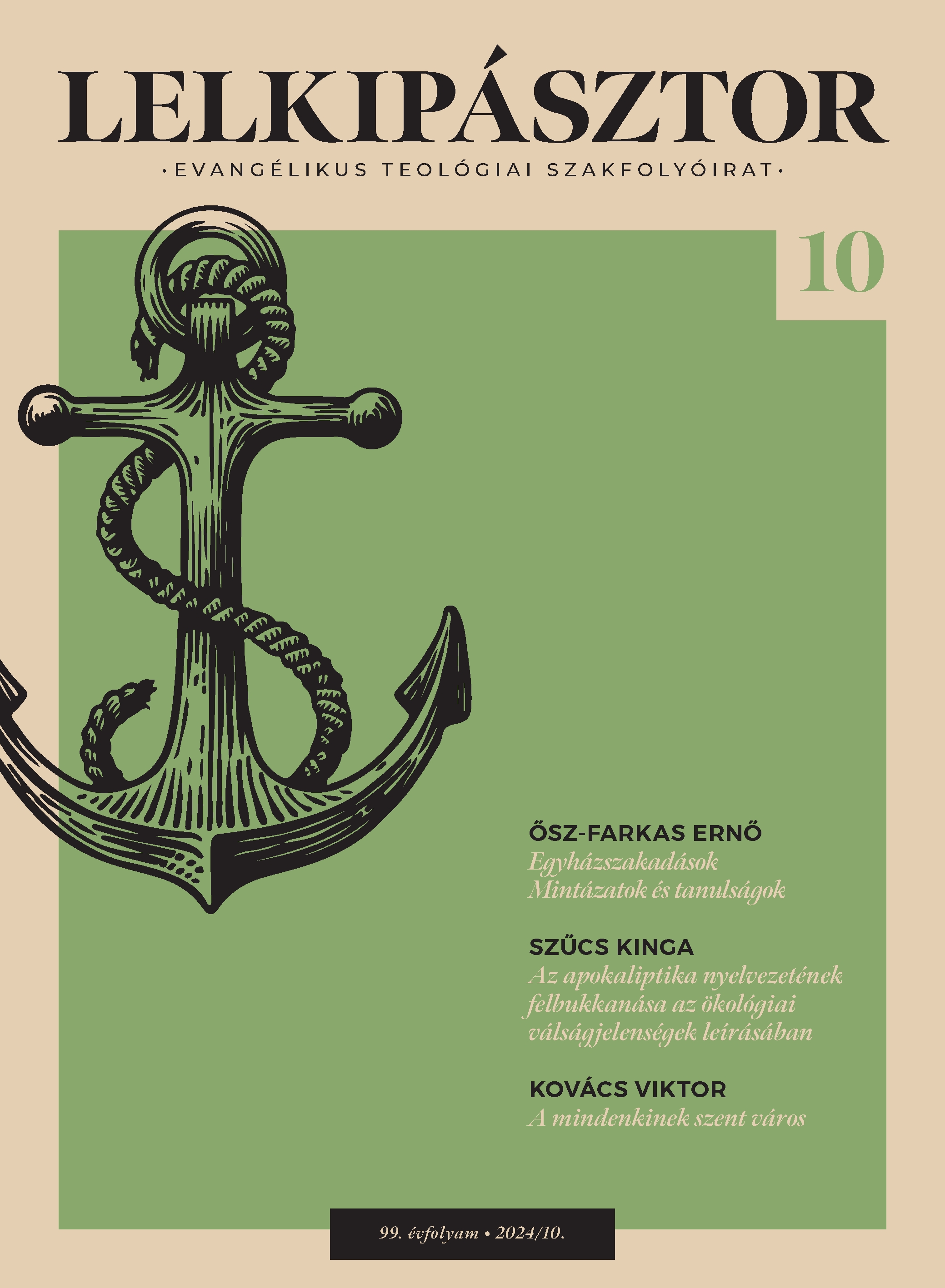Schisms in the Church
Patterns and Lessons
Abstract
Conflicts have always existed and will continue to exist within religious communities. These conflicts may resolve over time, either with or without assistance; however, virtual schisms do not. When conflicts result in opposing factions, creating irreconcilable differences in the interpretation of mission, creed, theological vision, and ethical questions, frontlines are established between liberal and conservative directions, the schism becomes real, even if no one leaves the church formally. The dissertation on the topic of schism and reconciliation presented in this study provides key solutions in managing religious divisions. Furthermore, this study compares the patterns of three schisms that occurred in the Seventh-day Adventist Church between 1956 and 1975 with two schisms in a historical church after World War I, as well as with the general characteristics of internationally known and studied schisms. The schisms follow sociological, social, psychological, and leadership-related laws, even though spiritual leaders find theological and spiritual justification in each case.
References
Bennett, Zoë et al. 2018. Invitation to Research in Practical Theology. Routledge, London. https://doi.org/10.4324/9781351068246
Bruce, Steve 1990. A House Divided: Protestantism, Schism, and Secularization. Routledge, London.
DiMaggio, Paul J. – Powell, Walter W. 1983. The Iron Cage Revisited: Institutional Isomorphism and Collective Rationality in Organizational Fields. American Sociological Review, 48. évf. 2. sz. 147–160. o. https://doi.org/10.2307/2095101
Emerson, Richard M. 1962. Power-Dependence Relations. American Sociological Review, 27. évf 1. sz. 31–41. o. https://doi.org/10.2307/2089716
Fazakas Sándor 2004. Emlékezés és megbékélés. Kálvin Kiadó, Budapest.
Finke, Roger – Scheitle, Christopher 2009. Understanding schisms: theoretical explanations for their origins. In: James R. Lewis – Sarah M. Lewis (szerk.): Sacred Schisms. How Religions Divide. Cambridge University Press, Cambridge – New York. 11–34. o. https://doi.org/10.1017/CBO9780511581038.002
Huber, Wolfgang 2002. Az egyház korszakváltás idején. társadalmi átalakulás és az egyház megújulása. Ford. Szabó Csaba. Kálvin Kiadó, Budapest.
Kohl, Helmut 2009. Vom Mauerfall zur Wiedervereinigung. Meine Erinnerungen. Knaur, München.
Köbel Szilvia 2005. „Oszd meg és uralkodj!” Az állam és az egyházak politikai, jogi és igazgatási kapcsolatai Magyarországon 1945–1989 között. Rejtjel Kiadó, Budapest.
Köbel Szilvia (szerk.) 2008. Egyházak és tolerancia Magyarországon. Tudományos konferencia az 1947. évi XXXIII. törvény megszületésének 60. évfordulója alkalmából. Oktatási és Kulturális Minisztérium Egyházi Kapcsolatok Titkársága, Budapest.
Lewis, James R. – Lewis, Sarah M. (szerk.) 2009. Sacred Schisms. How Religions Divide. Cambridge University Press, Cambridge – New York.
Niebuhr, Richard 2005. The social sources of denominationalism. [Reprint.] Kessinger Publishing, Whitefish.
Osmer, Richard R. 2008. Practical Theology. An Introduction. William B. Eerdmans, Grand Rapids.
Pfeffer, Jeffrey – Salancik, Gerald 2003. The External Control of Organizations. A Resource Dependence Perspective. Stanford Business Classics, Stanford.
Rajki Zoltán 2003. A H. N. Adventista Egyház története 1945 és 1989 között Magyarországon. Advent Kiadó, Budapest. (Societas et ecclesia.)
Rajki Zoltán – Szigeti Jenő 2012. Szabadegyházak története Magyarországon 1989-ig. Gondolat Kiadó, Budapest.
Romsics Ignác 2002. A történetíró dilemmája: megismerjük vagy csináljuk-e a történelmet? Mindentudás Egyeteme, október 7. https://mindentudas.hu/előadások/tudományterületek/bölcsészettudomány/138-történelemtudományok/6059-a-toertenetiro-dilemmaja-megismerjuek-vagy-csinaljuk-e-a-toertenelmet.html. (Megtekintés: 2022. október 4.)
Szász Lajos 2020. Trianon árnyékában. Egyházszakadások a Magyar Református Egyházban. Teológiai Fórum, XIV. évf. 2. sz. 96–115. o.

This work is licensed under a Creative Commons Attribution-NonCommercial-NoDerivatives 4.0 International License.




